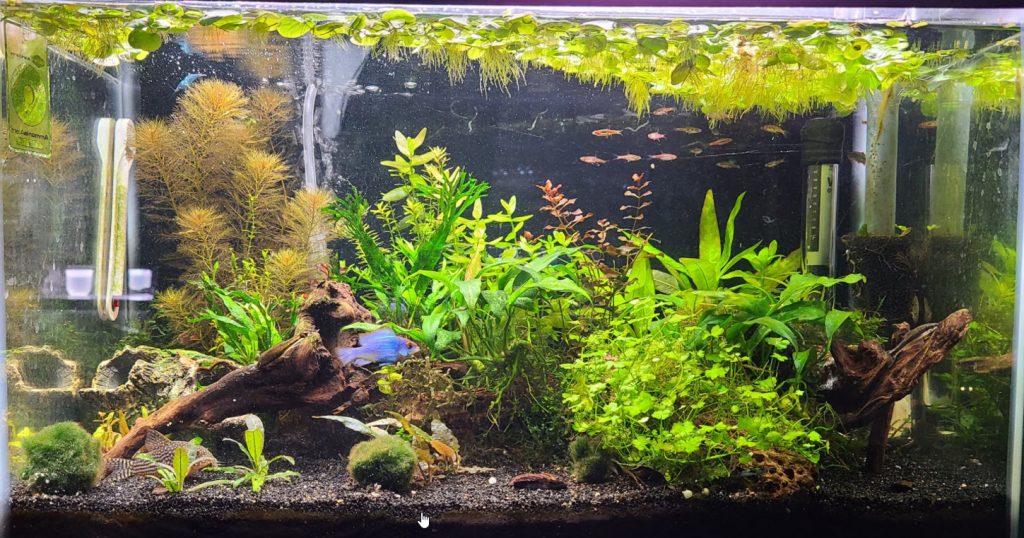
Perfectly clear, indeed sparkling crystal-clear, water is the nirvana of any aquarium owner. This factor is difficult to quantify. But all experienced aquarium owners know what crystal-clear water is. It is just something you know when you see it.
If you watch the aquarium YouTube or Facebook videos only roughly one in ten of the experienced aquarium owners have water that has that crystal-clear look to it. Most have water with a dull, semi-cloudy look.
What is often missed in this discussion the importance of crystal-clear water. It goes beyond aesthetics. The usual reason the water isn’t crystal-clear is because of heavy numbers of infusoria, algae, bacteria and protozoans. The bacteria are the most problematic.
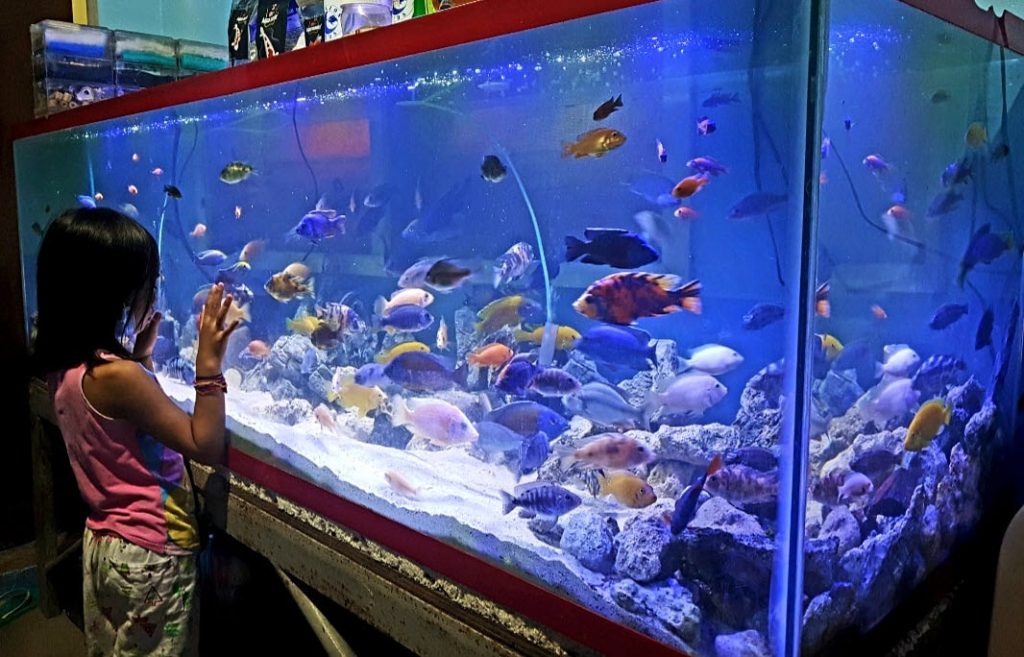
The aquarium above is beautiful but note the ‘dull” water. Also note the lack of either air stone bubbles or “choppy waves” in the aquarium. With a wavemaker or some airstones (i.e. good aeration) this aquarium might well have crystal clear water. I would predict that the fish in this aquarium will be dying at a relatively high rate.
Bacteria and Fish Health
The fish’s immune system is constantly fighting all the bacteria that the gills are exposed to regardless of the type of bacteria. So a lower bacterial count means more immune system resources available for fighting off pathogens. A high bacteria concentration will compromise the immune systems of the fish and can cause any number of disease and pathogen breakouts. All owners of aquariums should strive for crystal-clear water.
If the bacteria count in the water column is low the fish can put all their immune system resource towards keeping pathogens at bay. So fish in bacteria free water are far more healthy that fish in bacteria laden water.
.
The Key to Good Fish Health is Clean, Clear, Bacteria Free Water
.
Note that , contrary to popular myth, this does NOT mean water which has a 50% water change done to it once a week. The only way water changes can compensate for low biofiltration is if the water is changed on the order of 75% to 100% per day. The mechanism is that these water changes reduce the dissolved organic compounds in the water to the point where there is no food source for the organisms that cause cloudy water. Since these organisms do not need a lot of food this requires VERY heavy water changes.
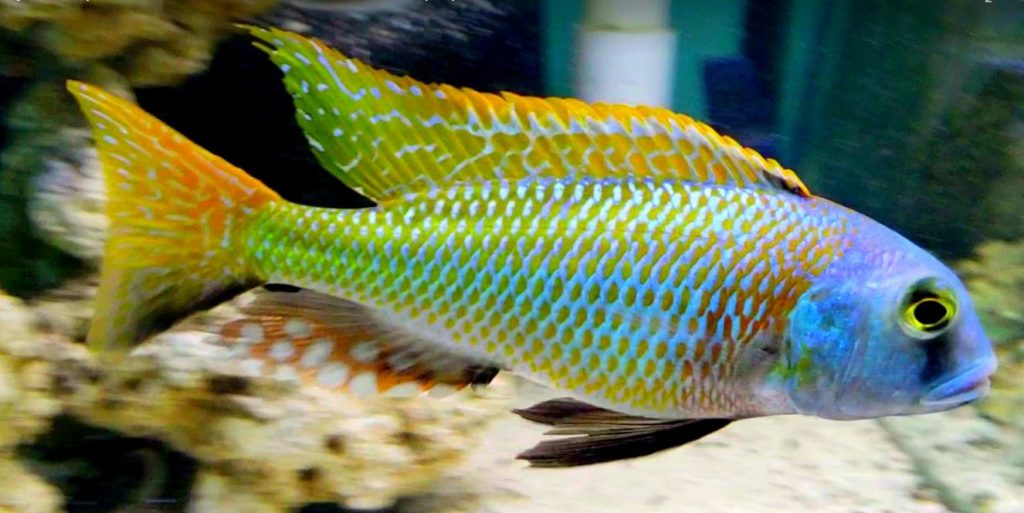
Dull water clarity is due mostly to floating bacteria and infusoria feeding on that bacteria. There are three types of bacteria in an aquarium:
- Floating bacteria that feed on dissolved organic material (so called water column “heterotrophic” bacteria)
- Surface biofilm and brown gunk bacteria that feed on dissolved organic material (so called biofilm and brown gunk “heterotrophic” bacteria)
- Surface biofilm and brown gunk bacteria that feed on oxygen, ammonia, nitrite and carbon dioxide (so called biofilm “autotrophic” bacteria).
The emphasis in filtration is generally on the third type of bacteria, the autotrophic bacteria. These bacteria are what is normally called “beneficial bacteria”. What is missed in aquarium hobby is the fact that the second type of bacteria, the biofilm heterotrophic bacteria, are also beneficial bacteria. This group of bacteria is the key to crystal clear water.
Further information on the topic of bacteria in the water column can be had by clicking the following link:
4.3. Free Floating Bacteria
.
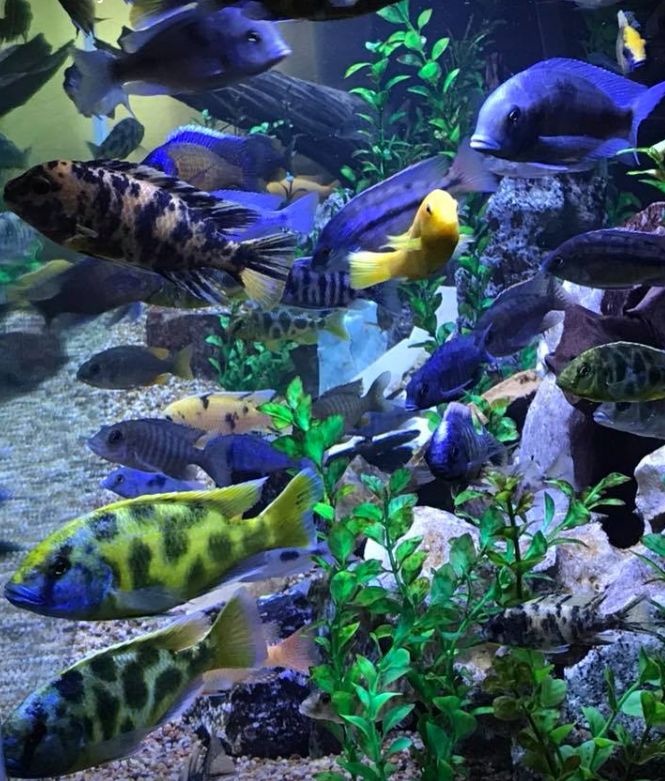
Requirements for Crystal Clear Water
Crystal clear water needs five things:
- Filter media surface area
- Moderate filter media flow rate
- A “mature” filter
- Good aeration
- High Protein Food
Surface Area: Elsewhere we determine experimentally that 100 square feet of surface area per pound of fish is required for crystal clear water. This is a very important factor:
.
For Healthy Fish and Crystal Clear Water Have 100 square Feet of Surface Area Minimum per Pound of Fish
.
It is also important to note that this same testing determined that ammonia oxidation only requires five square feet per pound of fish. So ammonia oxidation is easy to achieve while crystal clear water is difficult to achieve.
Flow: The first two types of bacteria (the heterotrophic bacteria) can double in population every thirty minutes to an hour. So flow and water turn-over becomes a factor. This is where water turnover rate through the filter becomes important. If the water turnover rate is only one times aquarium volume per hour the floating bacteria can multiply freely.
If the water turnover rate is two times per hour the surface biofilm bacteria in the filter have a good chance to out-compete the floating bacteria in the aquarium, IF AND ONLY IF there is a huge amount of surface area in the filter media (at least 100 square feet for every pound of fish). When the heterotrophic biofilm bacteria can out-compete the water column heterotrophic bacteria for food the water column bacteria die, and the water becomes crystal clear.
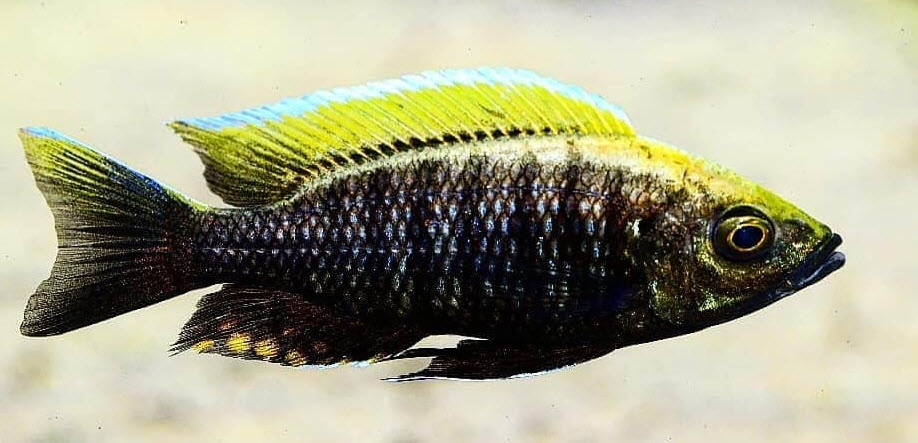
Media Maturity: In addition, it takes one to four months for a good biofilm structure (“brown gunk”) to develop in new filter media. If the media is constantly cleaned this structure may never form. This “brown gunk” is largely beneficial heterotrophic bacteria (“beneficial bacteria ain’t pretty”).
Aeration: Another factor is aeration. For every pound of fish in a tank there should be a minimum of thirty square inches of turbulent water air interface. This can be either “choppy waves” on the surface or lots of bubbles.
Food Protein Level: Food should have at least 45% protein level in order to prevent dissolved organic compounds which will feed cloudy water
Summary
So crystal clear water needs several things:
- At least 100 square foot of biomedia surface area per pound of fish
- At least 2X turnover rate in the aquarium in GPH through the filter
- At least two months of filter operation with no cleaning
- At least 30 square inches of turbulent air/water interface per pound of fish
- At least 45% protein level in the food
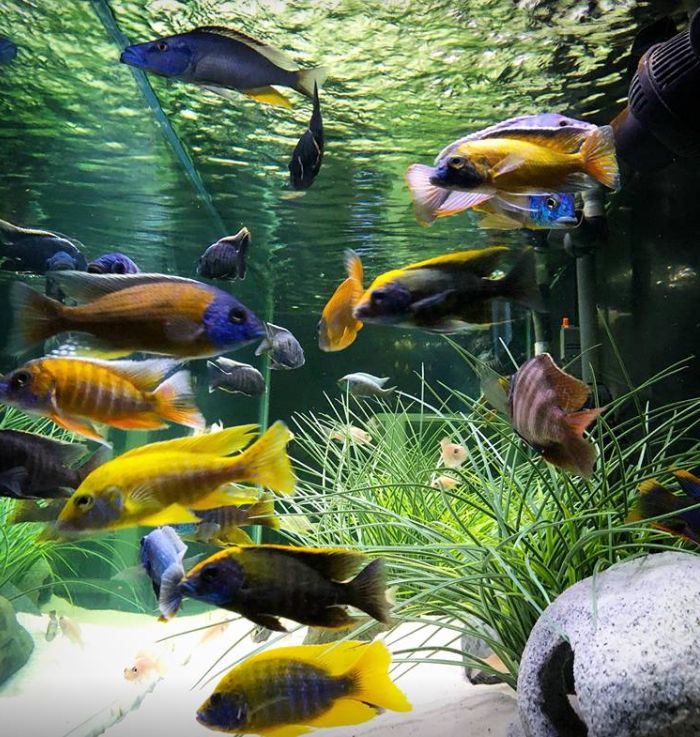
Alternatives
It is important to note that 100 square feet of surface area per pound of fish is just one of four methods that can produce SOMEWHAT clear water. All four methods are:
- 100 square feet of filter media surface area per pound of fish
- A polishing filter media such as Polyfil (polyester fibers), polyester mats (Pinkie Pads) or 40 ppi foam.
- A UV setup left on 24/7 kills the algae and infusoria in the water column.
- 50% to 100% water changes every day
What is important here is the difference between “somewhat” clear and “crystal” clear. “Somewhat” clear isn’t bacteria free water. It is water where the large visible particles have been filtered out but the microscopic stuff remains. Packed polyester (Polyfil) will filter out 200 micron particles. Most infusoria will be less than 200 microns and bacteria are 2 to 8 microns in size. This “somewhat” clear water can be very unhealthy water.
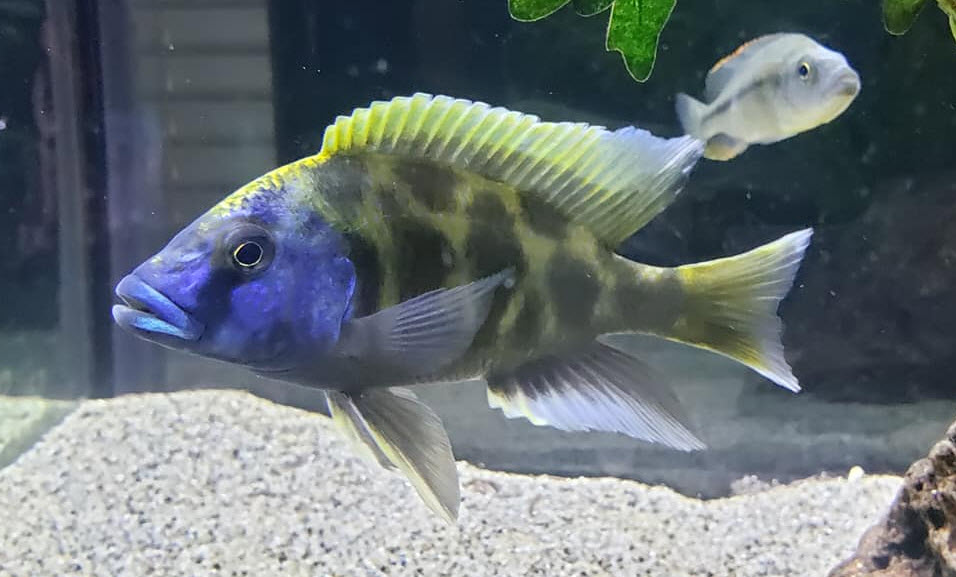
Using 100 square foot of filter media surface area per pound of fish will produce much clearer water than the other three methods as filtration by lots of surface area and flow will eliminate something called “DOCs”, or dissolved organic compounds.
Dissolved organic compounds come from food and feces and are what bacteria feed on. Polishing filter media and UV don’t eliminate DOCs so they don’t produce as clear of water. Large scale water changes only eliminate a portion of the dissolved organic compounds as feces and decaying food are producing DOCs 24/7.
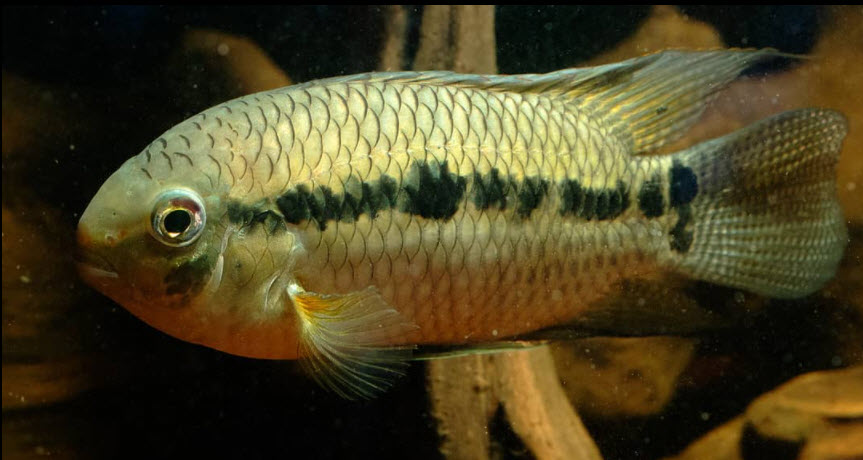
“Natural” Aquariums
Note that pristine waters in nature is often quite turbid. Fish do very well in these turbid waters. But the turbidity is different from what one will see in the TYPICAL aquarium. Turbid water in pristine lakes is loaded with BROWN OR GREEN organic detritus (including very tiny brown detritus and green algae particles) and lots of various algae, protozoa and metazoa. What it won’t have is large amounts of bacteria or dissolved organic compounds.
Bacteria produce water that looks like someone put a little bit of milk in it. What I call “dull water”. It is very slightly WHITE in color. It is the bacteria which are the problem with cloudy or “dull” aquariums.
So it is possible to have healthy water that isn’t clear. Generally this water will be slightly brown, green or yellow in color due to the floating detritus. This type of water is often found in so called “natural” or dirted aquariums. Father Fish has several such “natural” aquariums with some very heathy fish. His aquariums are very attractive even though though the water is slightly turbid and yellow. Walstad tanks also have this issue.
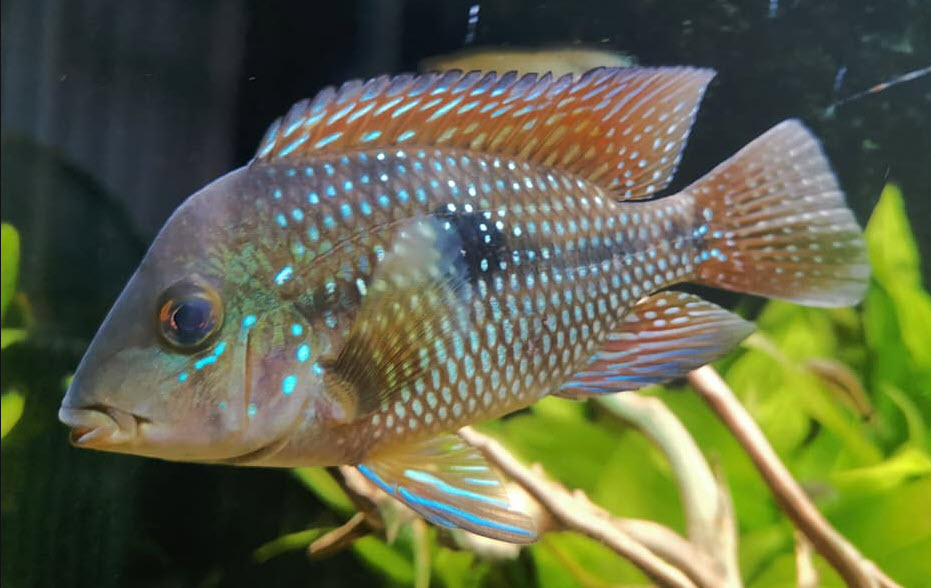
More information
For a more in depth explanation of this click on these links:
6.4.1. Crystal-Clear Water in Depth
6.4.2. Polishing Filtration
Note that this water clarity and fish health issue is extremely important to fish from the blackwater of northern South America like discus, rams, neons, apistos, and uaru. This is covered in some depth in this link:
17.3. Blackwater Fish
Note that there is a huge amount of marketing hype to the effect that Seachem Purigen “polishes water to unparalleled clarity“. Side by side testing reveal this to be just “snake oil” marketing hype. This link has the tests in it:
7.4.6. Purigen
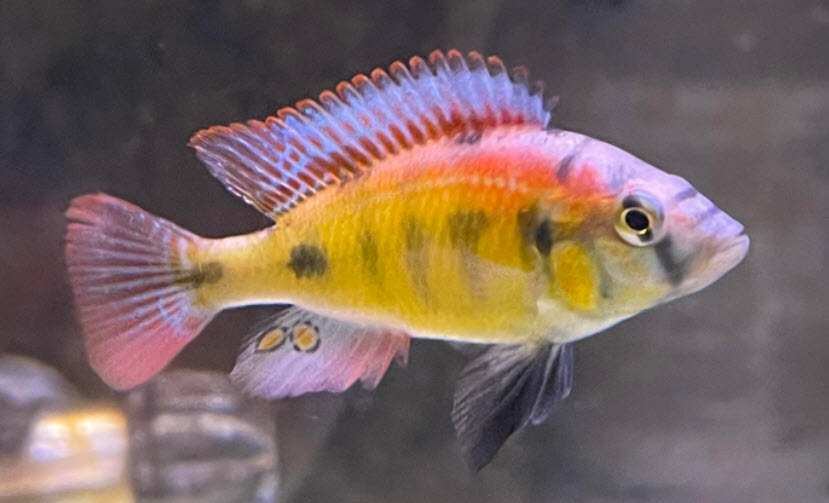
.
Return to Filtration Menu
.
Aquarium Science Website
The chapters shown below or on the right side in maroon lead to close to 400 articles on all aspects of keeping a freshwater aquarium. These articles have NO links to profit making sites and are thus unbiased in their recommendations, unlike all the for-profit sites you will find with Google. Bookmark and browse!
.

Dave says
Alex …. I’m out of the business of doing testing of any sort. Sorry.
Alex says
Hi Dave,
It seems to me that part of the reason the role microbial load / water clarity plays in fish health is under-appreciated (relative to NH3/NO2/NO3) is the lack of testing methods.
If you are inclined, a writeup on testing methods for turbidity might be very helpful. That might include evaluation of cheap Amazon meters, or maybe some kind of DIY solution, e.g. determining how many drops of some substance must be added to a known volume of pure water before the appearance matches a sample of tank water in an identical test tube.
Establishing a testing method and reference ranges for what could be considered crystal clear, dull, cloudy etc. and the expected health effects might go a long way towards making consideration of microbial load a standard part of the post-mortem for unexplained death of livestock. Were I equipped to do it myself, I would, but I am not in a position to do so.
Archie says
Thank you for pointing out all the root causes for the “dull water” or “cloudy water”. Previously I never thought of the heterotrophic bacteria and your summary review helps me working in that direction. I have many tanks and it puzzles me why some of the tanks at a certain period would have more clear water and then lost it and it all makes good sense now (me keeps vacuuming my substrate and cleaning the filter sponge!)
TYLOR Lubin says
I’ve found that regular water testing and diligent maintenance routines are key to achieving and sustaining this clarity. It’s amazing how a little attention to detail can make such a big difference in the vitality of our fish. Thank you for sharing this crucial aspect of aquarium care.
Dave says
In reply to Facu ….. There is just a world of differences between a natural waterway colored by mud and an aquarium colored milky by bacteria and protozoa. Two completely different ecosystems.
Facu says
Hi Dave,
I was wondering if fish in aquariums need crystal clear water, how some species make their entire life time in cloudy water rivers or lakes? I know those rivers are cloudy because of a big ammount of sediments (Bermejo river, La Plata river basin), but are the gills still fighting against those particles?
Dave says
In reply to Brad. Just a typo which I corrected.
Brad - UK says
Hi Dave,
Don’t you suppose you had a chance to look at my post below?
I.e. are aeration (turbulent) requirements 30 Square Inches per 454g of fish or 30 Square Inches per 200g of fish? (Differences in page and this metric).
Thanks,
Brad
Brad says
Hi Dave,
In the article above, you mention the following:
“For every pound of fish in a tank there should be a minimum of thirty square inches of turbulent water air interface.”
However, on another page (below), you mention it’s 30 square inches for 200 grams of fish. Can you advise which one is correct please?
https://aquariumscience.org/index.php/6-4-1-crystal-clear-water-in-depth/
Thanks in advance,
Brad
Dave says
In reply to Alex …. Yes, some hobbyists like Alexander Williamson have heavily planted, lightly stocked, filterless “natural” aquariums. The plants act as filters. Add more fish or larger fish and the water will become hazy. Have a fish die or overfeed even once and the water can become hazy. I have an article on those types of aquariums: https://aquariumscience.org/index.php/15-16-natural-aquarium/
Alex says
Hi Dave, there’s something that’s been puzzling me. If filtration is so critical to getting crystal clear water, how do “natural” tanks with no filter media manage to achieve it? Do they just stock extreme light?
Hong Wei says
Thanks Dave, will do as suggested. Found out that my sump pump is essentially 1x turnover, will be trying to increase that, though it requires some re-plumbing. Figure this will also maximize the effect of all the K1 in the sump.
Regards
HW
Dave says
In reply to Hong …. I would add two layers of filter wool to the sump and make the canister 100% K2 media. I’m just too lazy to clean out the mechanical filter in a canister once a week.
Hong says
Hi Dave
I have a 6x2x3ft (height tank) with a 5ft sump with approx 3 cubic feet of fluidized k1 and 1 cubic feet of static k1. I use 1 thin layer of filter wool for mechanical filtration and 18w in line uv within the sump with another pump. . In the tank is 80 three-inch cichlids.
The tank water has a lot of visible particles (due to the food) and I am intending to get a cannister filter to increase the tank turnover. I think the current sump turnover is 2x and the cannister can do another 4x.
Would you advise to put in a mechanical filter layer or just fill it with static k1? Any other suggestions for improvement?
Will also look to change the food in future once I finish the stock.
Thanks
Hw